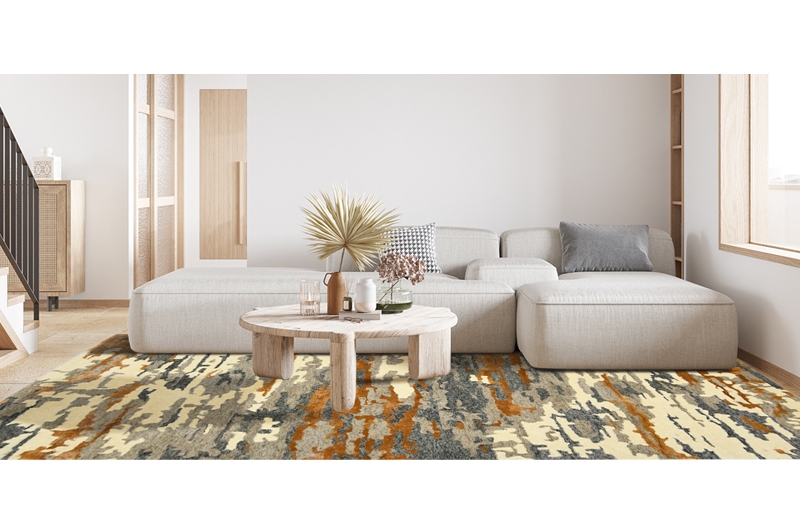
When you first spot a flat weave rug, you might think it’s just another type of weave. But, as the name implies, a flat weave is flat, giving the appearance of a weave that is not looped or hinged. In this blog, we’ll discuss the flat weave area rugs , what it is and what makes it unique. Read on to learn more.
Rugs can be made from many different materials and these days, you can find a wide variety of rug types. From synthetic rugs to wool rugs, there is a rug to suit any type of décor and any type of flooring. But let's look at what exactly is a flat weave rug, and how are they different from other types of rugs?
A flat weave wool rug is a weaving technique in which the weft (the inner part of a weave that moves) is horizontal rather than vertical. The rug weft cotton is usually longer and more flexible than the filling cotton, which is usually shorter and denser. This construction technique gives the rug a flat appearance, much like a woven piece of fabric.
There are many different types of weaves used in rugs, including flatweaves, satin weaves, and tufted weaves, to name a few. All these different types of weaves serve different purposes and have unique characteristics, making them appropriate for different types of floors.
The most common type of weave used in rugs is the looped weft system, which is used in most hand-knotted rugs. In a looped weft, loops of various sizes are interlaced throughout the length of the strands to create the dense texture of a hand-knotted rug.
A flat weave, on the other hand, uses a horizontal weft to create a flat appearance. The result is a rug with less texture and color variation than a custom hand knotted rugs , but with a more luxurious feel due to the supple feel of the material used.
Besides the obvious difference that a flat weave rug has in comparison to a looped or hand tufted wool rug, the other thing that makes it unique is the method used to make it. A flat weave is created by beating the cotton into a felting fabric, much like how a carpet is made. This beating process makes the cotton much softer and more pliable, which is why most flat weave rugs are much softer than their tufted or looped counterparts.
Also Read this blog : Major Things to Know About Flat Weave Rugs
Some of the benefits of a flat weave rug include:
Ease of cleaning: Since a flat weave rug is not made from a loop or tuft of cotton, it’s easier to clean because there are fewer particles to pick up. Simply vacuum or use a sweeping machine to remove dirt and debris.Many options are also designed as washable cotton rugs, allowing you to easily toss them in the wash for quick refreshment. Simply vacuum or use a sweeping machine to remove dirt and debris.
Low maintenance: A flat weave rug requires no special care, making it ideal for areas where a rug might otherwise be too time-consuming or costly to maintain, such as a family room ,office or even high-traffic spaces that benefit from indoor outdoor area rugs.
Goes with almost any decor: Because it is such a versatile and affordable rug, a flat weave is the perfect rug for any room in your home. It can be combined with almost any style of décor, from classic to modern, and can easily transition from indoors to outdoors.
Also Read this blog : Amazing Things TO Know About Hand-Hooked Rugs
While a flat weave rug has many benefits, it also has a few drawbacks:
Less texture : As we mentioned above, a flat weave rug has less texture and color variation than a hand-knotted rug, which may be a factor if you’re looking for more visual interest or texture. Also, a flat weave tends to be less dense and plush, so it’s not ideal for very high traffic areas.
Lack of thickness : A flat weave rug is only as thick as the weakest cotton in the weave, so a single flat weave in a large area might not be as thick as a hand-knotted version version in the same space.
Less durable : While a flat weave is more durable than a hand-knotted rug, it’s not as durable as a modern wool rugs, so it’s important to choose your flat weave area rug wisely.